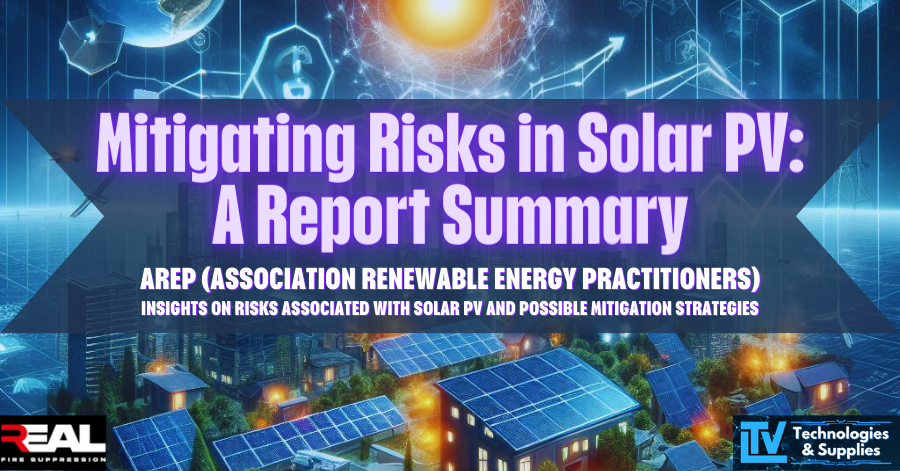Mitigating Risks in Solar PV: A Report Summary
Hello, readers of LTV Technologies and PVStop South Africa! We’re excited to share with you a recent report published by the Association for Renewable Energy Practitioners (AREP). This report, titled “Solar PV Risk Insight Report,” provides valuable insights into the risks associated with Solar PV and offers possible mitigation strategies.
Key Findings
The report is based on a survey conducted among Solar PV practitioners actively working in the sector. The two most prominent risk factors highlighted by the respondents relate to the installation phase. These are “Poor Installation Practices” and “Inexperienced or Unaccredited Installers”. It’s important to note that while fire is often publicised as a risk associated with Solar PV, the survey results did not identify fire as a stand-alone risk. Instead, it could potentially be viewed as a by-product of other prominent risks.
Mitigation Strategies
Despite the risks associated with Solar PV, the industry has developed and is actively implementing various effective mitigation strategies. These include:
- Isolation Switches and Anti-Arcing Equipment
- Various Rapid Shutdown Technologies
- Lithium Battery Fire Gel Extinguishers in case of battery fires
- Solar PV panel Light Blocking Solutions to neutralise the DC Danger Zone
- Early heat detection technologies including thermal imaging
- Smoke detectors
- CCTV cameras
Operational Phase: Emergency Evacuation and Response Planning
In the event of a fire or other emergency scenario, having a well-thought-out emergency response plan is crucial to minimise damage and ensure the safety of a structure and its occupants. Mitigation measures in case of emergencies include:
- Updating existing, or developing new emergency response procedures to include Solar PV considerations. (LTV will soon publish a Template focussing on Schools, Businesses and Public places)
- Installing fire detection and early warning systems as additional safety measures.
- Installing fire suppression systems on site: Examples include Lithium-Ion fire gel extinguishers in case of battery fires, and securing a viable solution to de-energize solar PV systems at the source of power production, e.g blocking light to solar PV panels to neutralise the DC danger zone.
PVStop’s Role
PVStop was developed for this exact reason. We are dedicated to providing a reliable shield for solar systems, ensuring the instantaneous and secure shutdown of panels during emergencies. Our liquid blanket technology stands as a testament to our commitment to a safer, more resilient solar power landscape in the face of unforeseen crises.
Our Partners and Products
We are proud to mention our PVStop partner, Real Fire Suppression, who also handle the Lithium fire suppression and solutions. We also offer a range of products like Thermarestor for the prevention of arcing and hot connections inside the PV Combiner boxes as well as on the AC side of installations in the DB Boxes. Arcbox is another product we offer for protecting the MC4 connections that are also a weak link for arcing problems.
Rapid Shutdown devices also have a place to de-energize PV in certain cases like maintenance and where needed to quickly de-energize panels although it won’t be able to totally de-energize the panels as PVStop does, there will be situations to use this solution.
And definitely, what LTV Technologies and supplies focused on is the quality of DC Switchgear that are NonPolarity DC products and not AC Adapted for DC voltage products that are very dangerous on reverse current and disconnection under load.
Please note: This blog post is a summary of the report and does not cover all the details. For a comprehensive understanding, we recommend reading the full report. Stay safe and stay tuned for more updates in the renewable energy sector!

